
An OnMilwaukee.com Special Feature
Shopping malls fight back
An evolution of malls from past, present & future
Take a sip of this story, brought to you by SoulBoxer – quality, ready-to-drink cocktails that promise less time making, more time drinking. Put a little soul in your life, Milwaukee.
This piece originally ran in December 2014.
The evolution of the mall, like much of America’s history, has been fast and furious, and whether or not it’s still relevant – in light of online shopping, box stores and technology, especially social media – is a fair question.
Since the inception of malls almost 100 years ago, the key to success has been expansion, renovation and the addition of new stores. Historically, malls and portions of malls have been built, torn down and rebuilt to align with the ever-changing tastes and demands of shoppers.
"We are constantly looking at opportunities," says Stephen Smith, senior general manager of Mayfair Mall. "Mayfair is always changing, and it will continue to evolve."
Although the way malls attract customers has changed – as well as how customers access them – a visit to most local malls on any weekend day will confirm through packed parking lots and crowded food courts that people are still, indeed, "going shopping."
Some malls were unable to morph with the times, and online shopping has definitely taken a big bite out of the retail pie, but for many Americans mall shopping continues to offer more than buying opportunities. The experience is tied to a sense of community, relaxation, nostalgia and even "therapy."
Plus, you simply cannot get an Orange Julius or a Cinnabon on Facebook.
Let there be mall!
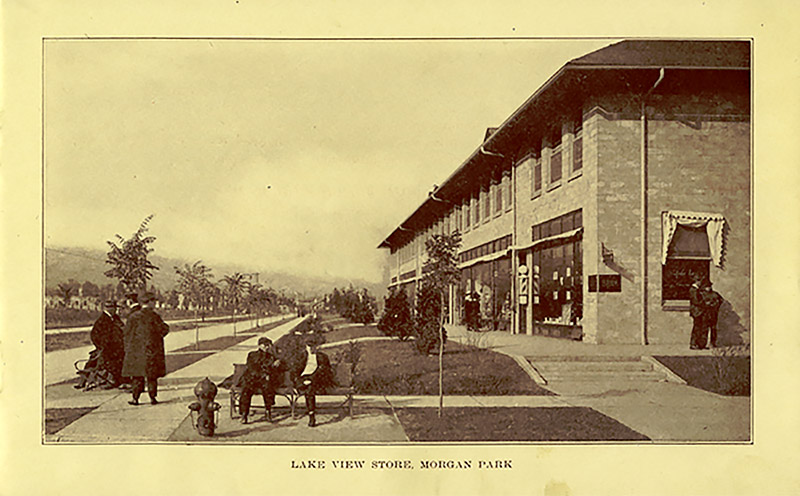
The very first mall, called the Lake View Store, opened in 1916 in Minnesota. It was a three-story building with different stores on each level. Similar "malls" continued to pop up in other parts of the country, especially with increasing automobile ownership and, consequently, suburban expansion.
After World War II, shopping centers became a hot national trend. In 1949, brewery supplier Kurtis Froedtert shared plans with Milwaukee to unveil three new malls located just outside the city limits: Southgate, Westgate (later Mayfair) and Northgate.
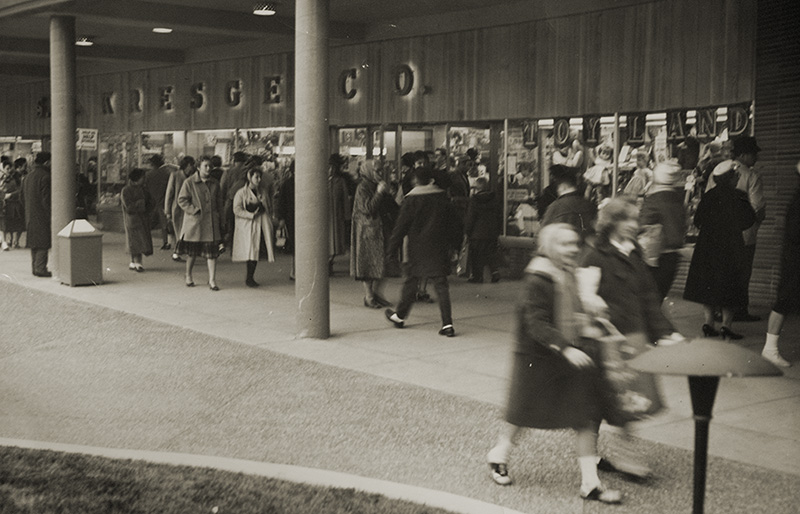
Southgate Shopping Center, later Southgate Mall, opened in 1951 on South 27th Street, making it the first suburban shopping mall to open post World War II in the Milwaukee area.
The first enclosed shopping mall – much closer to the kind of mall we know today – opened, interestingly, in Appleton in 1955. (It was torn down in 2006.)
The Valley Fair Shopping Center started out with only six stores: a Krambo supermarket (later a Kroger), a camera and card store, a hardware store, a bakery and a liquor store. (Of course a liquor store: It was built in Wisconsin, after all.)
Bayshore opened in 1954, followed by Capitol Court in 1956, Mayfair in 1958 and Brookfield Square in 1967.
The Southridge Mall – almost 10 times larger than Southgate – opened in 1970 and three years later, mirror-image Northridge Mall opened on the opposite side of the city.
Both were developed and built in a partnership between the Herb Kohl family and Michigan-based Taubman Development. The two malls were intended to complement one another, not compete, and had fairly identical floor plans with many of the same stores and restaurants. The original anchor stores were Sears, JC Penney, Boston Store, Kohl’s and Gimbels.
Mall culture was officially underway.
Raising the roof and facility facelifts
In the ‘70s and ‘80s, all of the local malls underwent renovations to better accommodate shoppers who were spending more time in malls and to follow the new trend of enclosed shopping centers.
Before & After
Enclosed malls were particularly welcomed in places like Wisconsin that experienced cold and snowy weather.
In 1971, Southgate enclosed the mall and added more shops. In 1973, Mayfair enclosed, Bayshore enclosed in 1974 and in 1978 Capitol Court received a roof.
All of the malls got renovations and updates almost every decade after becoming enclosed.
Retail experts started to examine how space was being used and by the ‘80s, it was clear the mall was about to morph into a new incarnation.
Before & After
Large, centralized seating areas – prevalent in malls like Northridge and Southridge in the ‘60s and ‘70s – were replaced with smaller lounging spaces and kiosks. In short, sitting space became selling space.
The decor of the mall changed in the ‘80s, too, moving toward the current trend of glass and chrome, versus more natural elements like waterfalls, foliage and even live animals.
Mayfair had an abundance of plants and creeks filled with goldfish. (Kopp’s Frozen Custard on Port Washington Road had a similar scheme.)
"Some of the goldfish stood out in size or color and people would name the fish and come to visit ‘their fish,’" says John Powers, Mayfair’s associate operations manager.
Southridge's two-story aviary with live birds (who apparently proved difficult to keep alive, according to one long-time mall employee) and massive fountain in the middle of the mall were eventually replaced by kiosks and a cafe.
In 1988, both Northridge and Southridge went through major remodels to look more "modern," and to update the food courts.
During this time, malls became more accommodating to shoppers of all kinds with the addition of better-accessible rest rooms for the disabled and diaper changing and breastfeeding stations.
Before & After
"Our ultimate goal has always been to make the changes that people don’t even notice but make their shopping experience easier and more enjoyable," says Mayfair's Smith. "I’m always watching human routines and trying to figure out, for example, exactly what the mom with the stroller needs but might not even recognize."
In 2006, Bayshore made the most significant change since the era of enclosure when it became Bayshore Town Center, a walkable, outdoor shopping district constructed atop the former parking lot next to the still-intact indoor mall. Aside from many new stores and restaurants, along with the iPic movie theater, the new design also included two parking garages and 113 residential units.
"We have found that people prefer the mixed-use space and find it beneficial to their lifestyle," says Dave Moss, general manager at Bayshore Town Center.
The rink, the monkeys and the kookiest cookies
In decades past, malls offered a variety of attractions that are rarely offered today.
In 1973, Mayfair opened the fondly remembered skating rink which remained open until the mall was renovated in 1986.
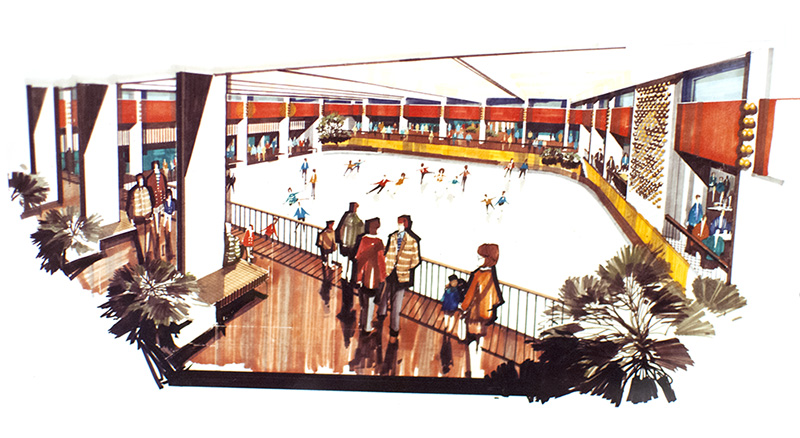
"I remember sitting in McDonald’s and watching the ice skaters below," says Milwaukee mall shopper, Niki Ziebell. "That was always a big treat."
Mayfair’s skating rink is a reminder that, for many, malls offer memories.
"The ice rink is more about the time spent there as a kid, with friends and with family," says Smith. "Malls in general are often about the nostalgia. The memories of the mall mean more than the mall itself."
Older Milwaukeeans will also remember the Linden Room, a restaurant inside Marshall Field’s at Mayfair, which was open from 1959 until the late ‘90s. It was modeled after the Walnut Room in Chicago and was famous for its Christmas celebrations and Frango Mint pie.
"It tasted just like the Frango Mint chocolates," says Powers.
Capitol Court erected many temporary, seasonal displays to attract customers, including petting zoos, a live monkey attraction, a giant wooden Easter egg, a dolphin show and the famous Kooky Cooky House.

The attraction was assembled annually during Christmas before Capitol Court Mall was enclosed and featured a walk-through cookie factory with hundreds of moving parts, real cookies and the chance to sit on Santa’s lap at the end.
Last month, the Kooky Cooky House was rebuilt and reopened inside Discovery World. Media personality Gino Salomone was the driving force behind the reconstruction.
Salomone’s grandmother lived on 62nd Street and Capitol Drive and from the windows in the back of her house he could see the Christmas tree every December in the mall. He also fondly remembers going to the Kooky Cooky House.
The Kooky Cooky House remained in the basement of Capitol Court long after it closed.
"I got goosebumps when I saw the structure (in the basement)," says Salomone.
Pop concerts and celebrity appearances – popular particularly in the ‘80s – are less of a mall attraction today.
In 1986, Salomone started a business called Rerun Reunions to bring talent to perform in local malls, including actress Cheryl Leigh ("Not Another Teen Movie," "Grey’s Anatomy") to Mayfair and Adam West ("Batman" from the ‘60s TV series) to Brookfield Square.
Salomone also booked four or five "The Wizard of Oz" munchkins to make an appearance at a mall in Pittsburgh.
"That was when the indoor mall was huge," says Salomone. "They were also places parents could drop off their kids for the entire day."
It was common for musicians to perform in malls from the late '80s to mid '90s. One-hit wonder Tiffany’s 1987 mall tour perhaps epitomized this trend.
Today, musical acts are still common at various times of the year: Macy’s offers fashion shows, Bayshore Town Center annually hosts the Milwaukee Youth Orchestra and The Shops of Grand Avenue showcase the creepy-cute mechanical bear orchestra, but nothing like the old days when thousands of fans packed the center of a mall to hear "I Think We’re Alone Now."
The fall of the mall

By the mid ‘90s, Northridge was clearly struggling to maintain clients with shops pulling out one by one, including Deb, Hallmark, Radio Shack and Waldenbooks.
Northridge closed in 2003 and plans to reopen the mall have never come to fruition.
"It was a good building," says Northridge property caretaker Jeff Myszewski, who worked at the mall for 20 years. "Not that many years ago, you wouldn't be able to walking around here now, because it'd be jammed full of people."
In 2009, U.S. Toward bought the 800,000-square foot structure and announced plans to open a "Chinese Mall of North America" called Amesia, showcasing Far East retailers. These plans never materialized.
The building later went into foreclosure and Wauwatosa’s Penzeys Spices tried to take over a portion of the building but that, too, fell through when U.S. Toward stepped forward and paid off the mortgage in full, once again retaining ownership of the space.
The Shops At Grand Avenue, which opened in 1982 in Downtown Milwaukee as the Grand Avenue Mall, was already starting to show signs of deterioration by the middle of the 1990s.
Steve Kennedy was the general manager at the Grand Avenue Mall from 2001 to 2002. This was during the renovation period that included the addition of the 3rd Street and Wisconsin Avenue entrance, new lighting, floor replacement and the name change to The Shops of Grand Avenue.
"At the time, Marshall Field's had moved out and the attempt was to keep as many clients as possible," says Kennedy.
Kennedy says the fact people want to shop closer to home is the main reason why Downtown malls in particular scramble to attract shoppers.
"The one thing that drives business away from places like Grand Avenue is the simple issue of convenience," says Kennedy. "Shopping is a social exercise, but it’s still about convenience. There just aren’t enough people living in the Downtown area to support a mall."
Ziebell grew up shopping at Northridge, Bayshore and the Grand Avenue Mall. However, even as an adult living within walking distance from the Downtown mall, she rarely accessed it.
"When I was younger, I went to the Grand Avenue Mall all the time. Much of Grand Avenue’s awesomeness was the beauty of the space," says Ziebell. "However, until recently I lived Downtown, and the only reason I went to Grand Avenue was to run into Office Max or TJ Maxx."
Episodes of boisterous teens and violence contributed to some shoppers feeling uncomfortable at Northridge and Grand Avenue. Mayfair Mall also experienced some incidents yet continues to thrive because of extra security, stricter codes of conduct and rules against unsupervised teens in the mall were quickly enacted in response to the events.
"Security has increased. But for many reasons, including because of the theater being open until 1 a.m.," says Smith.
Staying power
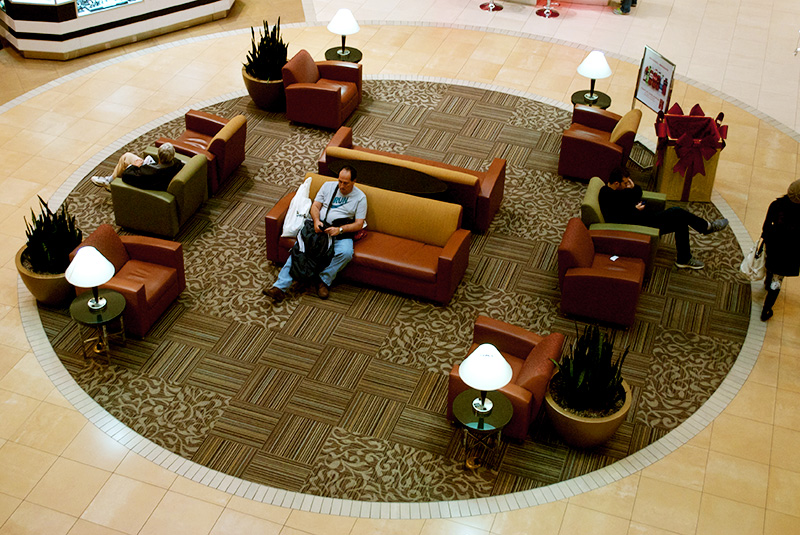
Despite the loss of its "sister" mall to the north Southridge is now Wisconsin’s largest mall with 125 stores and eateries.
"Shoppers in 1970 came to Southridge for many of the same reasons they visit today – great customer service, retail and product selection, dining, entertainment and community connection," says Mary Mokwa, the shopping center's general manager.
Bayshore, Mayfair and Brookfield Square also continue to add new shops to the mix – particularly stores that were or are new to Wisconsin like Macy’s and Nordstrom (coming to Mayfair in 2015). This is most likely the biggest reason why malls continue to compete in the retail game.
"Years ago, you had to go to Chicago to access stores like Macy’s or Nordstrom, but now it’s all here, as it should be," says Ziebell. "It’s not only great for the malls, it’s a testament to the city – that it’s thriving and growing."
Also, in recent years, malls have seen a rise in free-standing shops and restaurants located in outlots but not attached to the shopping center itself. These offer a unique look, more visible signage, easier in-and-out and more streamlined deliveries.
"This speaks to the evolution of how things change based on the change in what shoppers want," says Smith.
In 2012, The Shops of Grand Avenue took a different route with the addition of "pop-up shops" that allowed retail spaces to be rented and subdivided at extremely affordable rates. Struggling and thriving malls in cities like Pittsburgh, Washington, D.C. and Portland have also encouraged pop-up stores to promote local retail opportunities and to infuse creative life into mainstream districts.
"The (Shops of Grand Avenue) mall has always collaborated with local arts and cultural groups to host events and exhibits," says general manager Courtney Groff.
Last month a New York-based real estate firm, Alliance Capital Invest, purchased the mall and the center's future, at this point, is unknown.
Keeping longer hours has helped malls compete with the convenience of online shopping. When Mayfair first opened, it closed at 6 p.m. on Tuesdays and none of the malls were open on Sundays.
"It was a big taboo for retail to be open on a Sunday. I remember going to church when Southgate first started opening on Sundays and the monsignor was appalled," says Powers. "It’s amazing how things change."
When shopping reflects life
From open collections of stores to enclosed malls to "town centers," the evolution of the mall mirrors how quickly American life changes and how often it goes in a full circle.
Bayshore is a prime example of this. The shopping center opened in 1954 as a collection of stores, became enclosed in the ‘80s and in 2006 expanded into the "town center" layout.
"As with most commercial trends, change is driven by the demands of today’s educated consumer," says Lynn Meredith, senior director of marketing for Olshan Properties, which owns Bayshore.
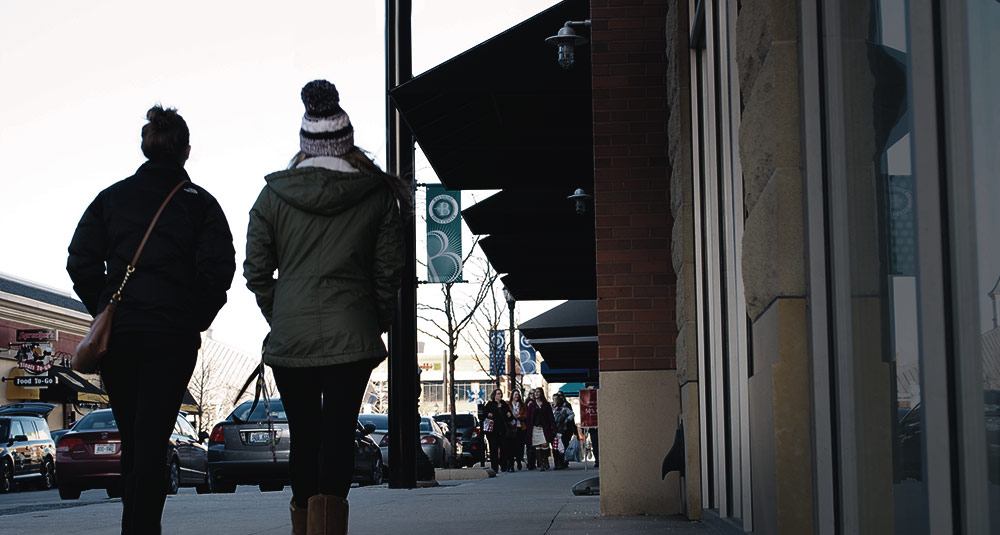
The demolition and then rebuilding of a theater at Mayfair also demonstrates the rise and fall – and rise again – of shopping districts.
"Basically, there was a freestanding theater outside of Mayfair. It was demolished. Then it was brought back because people wanted a theater at the mall," says Smith.
Some believe that as our lives speed up and work schedules become more taxing, people spend less time lounging in malls and more time getting down to retail business.
"Life has gotten busier and people are not coming to the mall to hang out as much as they might have," says Smith. "People don’t have the luxury anymore. Life is faster paced and more complicated. People are trying to get more done in a day than they did in a week."
In part, this is why the town center layout is preferred by some who want to pull up, run in, run out and drive on to the next task.
"I like not having to figure out where to park to be close to the shop inside the mall. I usually go with a reason, a purpose, like the kids need coats," says Ziebell.
Technology, social media, cell phones, texting, box stores, online shopping and violence also played a role in how people think about and access malls – as well as how malls have changed in retail offerings, aesthetics and programming to accommodate the ever-morphing customer demands.
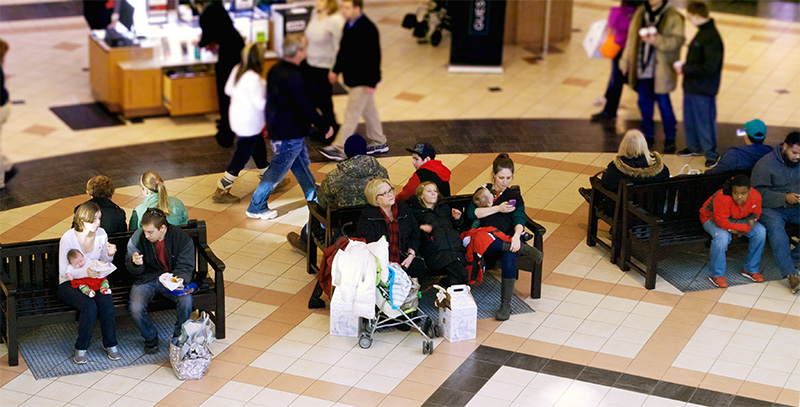
At one time, the mall was a meeting place for people. Teens met at the malls to congregate and communicate – much of this now takes place through social media and texting.
In general, Ziebell finds malls less kid-friendly than they were when she was growing up.
"I would never take my kids with me to the mall. That sounds annoying. Except for maybe the Mall of America because it has so many more attractions other than shopping," she says.
Through smart phones and computers, comparison shopping has become much easier and people are less likely to physically travel from store to store to locate the best deal which contributes to less mall traffic.
The popularity of online shopping and cyber giants like Amazon have also reduced the number of mall shoppers. Because of this, online versus in-person shopping has become a polarizing topic.
"Black Friday is a prime example of this. Some find it a very fun family event, others don’t want any part of it," says Smith.
Some believe communal experiences – other than sporting events and concerts – are becoming less coveted by people due to social media outlets like Facebook which allow users to pick and choose who they hang out with – at least online – and shield them from people with different thoughts, values, attitudes and lifestyles.

However, the irony of social media in shopping – and life in general – is that the easier it becomes to do everything from the computer, the more people crave human interaction. And for this reason, malls continue to serve a deeper emotional purpose rather than the need for the latest styles.
"People will always need to have a place to meet and spend the day together," says Moss. "What has changed is the importance of social media in how young people communicate with each other and how they find out about the next big thing from the retailers that communicate with them."
· · ·













